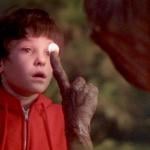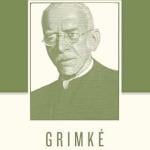FWIW, the increasingly nasty war of words between New Line Cinema co-founder Bob Shaye and Lord of the Rings director Peter Jackson has had me thinking back wistfully to this Salon.com story that I remember reading way, way back in November 2001 (gadzooks, Harry Potter looks so young in that photo):
At a time when the big, mainstream studios are managed by teams of bland executives whose marching orders are set by corporate bean counters, New Line, despite its ownership, has always moved to Shaye’s own mercurial personality.
And with “Lord of the Rings,” Shaye has put his company (and his own legacy) in the hands of two men: Peter Jackson, a director whose work up to now has hardly put him in the same league as a Steven Spielberg, James Cameron or a George Lucas; and Tolkien, a fusty Oxford don whose nearly half-century-old fantasy has a huge, devoted following but has never successfully made the journey to film. . . .
Jackson’s original plan was to make “The Hobbit,” and, if it was successful, then to turn the full “Lord of The Rings” tale into two movies, shot back-to-back. Easy enough — but the plan required that Miramax obtain the rights to the books from Saul Zaentz, the difficult but talented Academy Award-winning producer of “One Flew Over the Cuckoo’s Nest” and “Amadeus.”
Zaentz had controlled all “LOTR” film and merchandising rights since the 1970s and had refused to part with them ever since he produced Bakshi’s movie. But Miramax had an edge: The company was bailing out Zaentz on the production costs for “The English Patient” (which would also go on to win an Oscar for best picture). Weinstein began what would become a yearlong process to secure the rights to “Lord of the Rings.” (Zaentz controls “The Hobbit” as well, but because of some preexisting copyright kink, United Artists owns the rights to distribute the film, so Weinstein decided to dive directly into “The Lord of the Rings.”)
By early 1997, Miramax had completed its deal with Zaentz, and Jackson turned his attention to making two “LOTR” films for $75 million. But as the director got deeper into the development process, the budget began to look inadequate; Weinstein’s partner and brother, Bob, pushed to find another studio to help shoulder the cost. With no takers, in mid-1998, Miramax decided that the only way it could move ahead was to make a single three-hour film. Harvey Weinstein, by some accounts, was furious when Jackson told him he couldn’t agree to direct only one film and wanted to try to find someone else willing to finance two.
“It got really ugly,” says one person close to the situation. The outsized, dogged movie mogul had, after all, allowed Jackson to break from his deal with Miramax to make “The Frighteners” and to work on another dream project, “King Kong,” since scuttled, both at Universal; and besides that had spent nearly a year securing the rights for the director to a project no one else previously had managed to get. . . .
Miramax had already sunk about $12 million into the project — buying rights, testing special effects and paying Jackson. Not wanting to lose that investment, Weinstein grudgingly agreed to give Jackson three weeks to try to find a new backer — with several seemingly prohibitive restrictions. Among these demands were that Miramax’s investment be repaid within 72 hours of a signed agreement; that the two Weinsteins share executive producer credit with Zaentz on any film that resulted; and that the brothers receive a hefty 5 percent of the gross earnings of any and all films.
With the clock ticking, in late summer 1998 Jackson’s representatives began shopping the two scripts and an animatronics tape (a reel of storyboards accompanied by actors’ voice-overs) to major studios and a few top producers who held significant sway with certain studios. Quickly, nearly every potential patron summarily passed on the “Lord of the Rings” project, citing issues of cost, scope or Jackson’s ability to pull it off. Only two companies — New Line and Polygram Filmed Entertainment — were willing to hear Jackson’s full pitch for the project. While his team was out soliciting interest, to further help their cause Jackson returned to New Zealand to shoot a documentary to make the case that this was the right time to mount “Lord of the Rings.” His central point: Movie-making technology had finally caught up to Tolkien’s imagination. Jackson spent roughly $35,000 of his own money to make the reel, which included footage of special-effects tests, creature models, locations in New Zealand and interviews with department heads.
The next week, Jackson and his writing and producing partner, Frances Walsh, flew to Los Angeles with props and that 38-minute raison d’être for a day of meetings, first with Polygram and then with New Line. The group from Polygram was intensely interested in the project, but because the company had just been taken over by Universal Studios, its future was up in the air; the executives present hadn’t the authority to make a deal. So Jackson’s last hope came down to New Line.
Shaye first met with Jackson alone. The director recalls: “Essentially, he said, ‘Look, you know before I hear your presentation that I’d love to work with you. You’re always welcome here.’ He seemed to be almost preparing me in advance to say no.”
Then Shaye heard the team’s presentation and watched the documentary. Jackson’s agent, Ken Kamins, who was also in the room, says that when the tape ran out, Shaye turned to the group and said, “Well, it’s not two movies.”
Says Kamins: “And Peter begins to hang his head, dejectedly, because he’s thinking, ‘Oh, no. Not again.’ But Bob says, ‘Tolkien did your job for you. He wrote three books. It’s three movies.’ At which point my foot is black and blue because Peter is kicking me under the table because he can’t believe what he’s hearing.”
Kamins and Jackson weren’t the only ones stunned by Shaye’s pronouncement. “I was hoping no one would pick it up — and some people corporately rooted that they wouldn’t,” admits Weinstein, who thought the project would come back to Miramax and Jackson would concede to doing one film. “I was surprised.” . . .
That’s more than I intended to quote, but it’s such a fascinating story, and there’s a lot, lot more where that came from.
Sigh. Makes you wish they could all just get along again. Also makes you realize that nothing has really changed, even if some of the personalities involved are wearing different hats this time.












